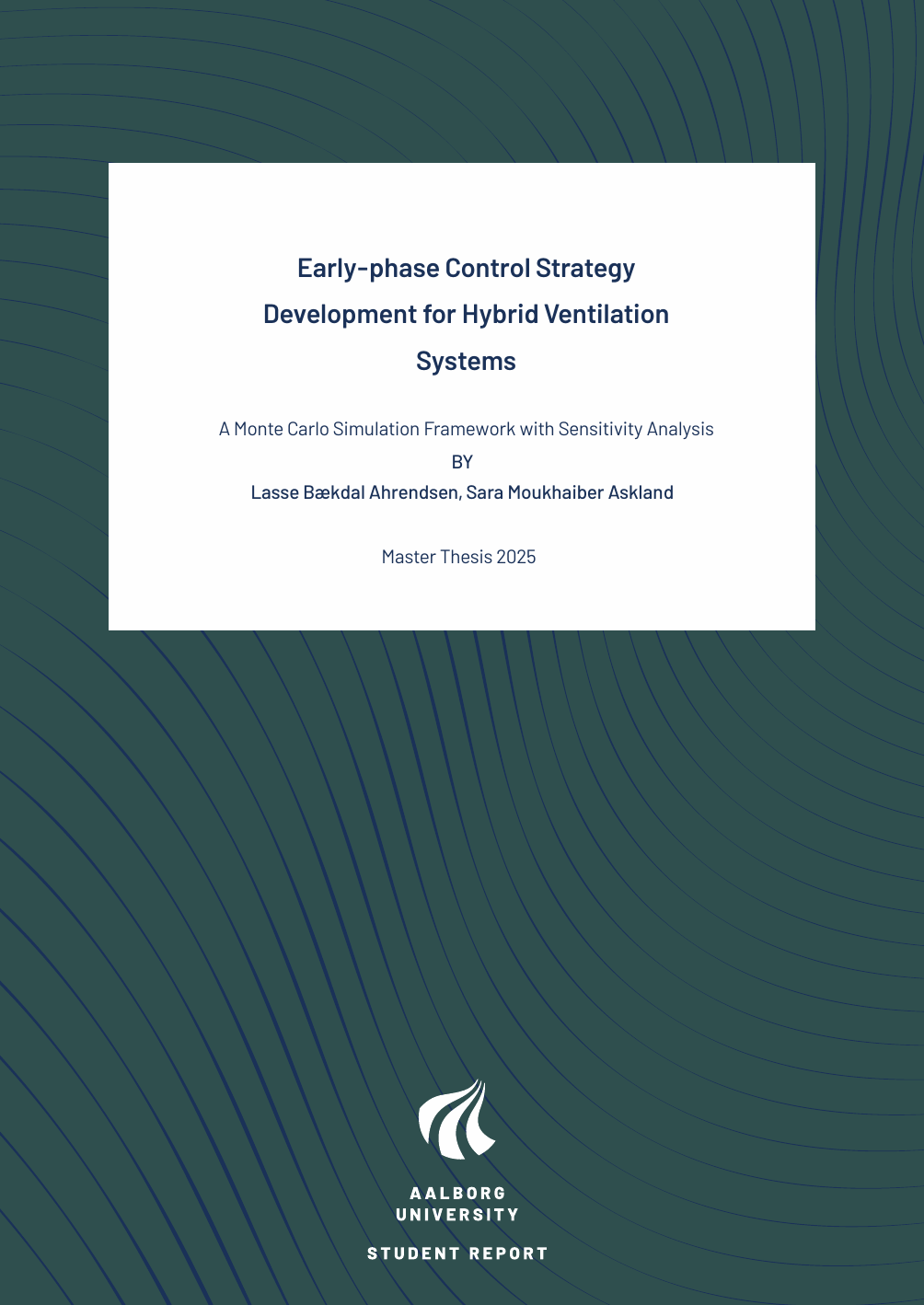
Early-phase Control Strategy Development for Hybrid Ventilation Systems: A Monte Carlo Simulation Framework with Sensitivity Analysis
Translated title
Early-phase Control Strategy Development for Hybrid Ventilation Systems
Term
4. Term
Education
Publication year
2025
Submitted on
2025-01-08
Pages
58
Abstract
Combining natural and mechanical ventilation, hybrid systems offer significant potential for reducing energy consumption while maintaining acceptable indoor air quality and thermal comfort. However, developing effective control strategies for such systems is inherently complex because of the multitude of interacting control variables and competing performance objectives. Traditional heuristic approaches, such as rule-based and fuzzy logic control, are straightforward but lack adaptability as they rely on engineering expertise and pre-defined rules. Meanwhile, optimal control methods require extensive high-quality data and are often impractical during the early stages of design. To address these limitations, this study presents a Monte Carlo-based method integrated with sensitivity analysis to systematically develop control strategies for hybrid ventilation systems. The method is applied to a case study of a generalised Oslo-based office building encompassing three distinct room types, and in different seasons. The process begins with the creation of an initial building simulation model, followed by the specification of control variable inputs, their ranges, and probability distributions. Monte Carlo simulations are performed to explore the solution space, and sensitivity analysis identifies the most influential inputs driving output variability. Multi-objective optimisation enables the simultaneous balancing of key performance metrics — energy consumption, indoor air quality, and thermal comfort — aligned with stakeholder preferences. A structured decision-making process is emulated through two workshops involving stakeholders, first to define inputs and later to interpret results. Using an interactive parallel coordinates plot is highlighted as an essential tool for navigating and identifying optimal control strategies. Results show the method’s ability to guide the development of high-performing and context-specific control solutions, offering a practical alternative to traditional approaches.
Keywords
Documents
